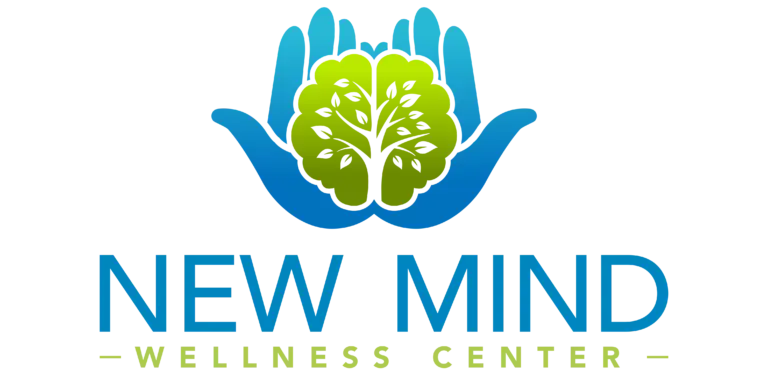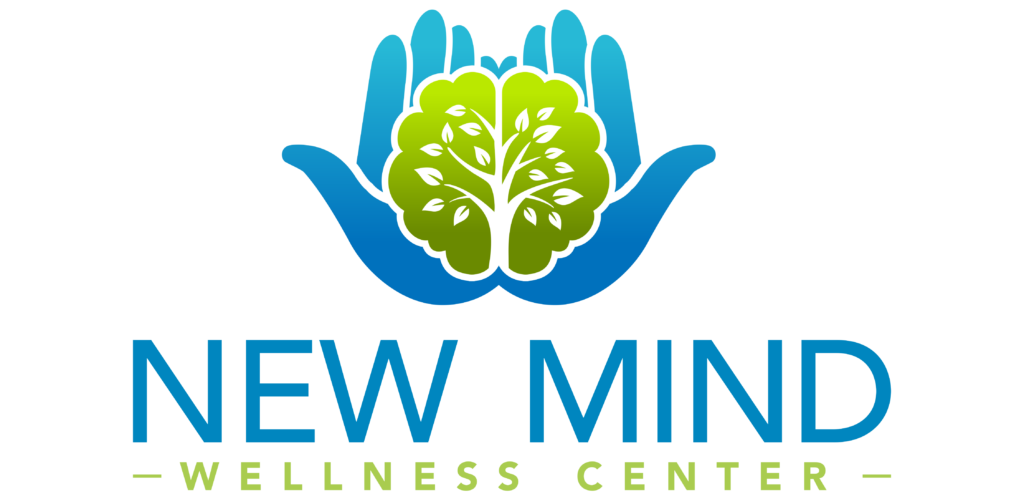
What is The DSM-5?
Articles about mental health topics frequently include references to the DSM-5. What is this book, and why does it play such an important role in mental health treatment?
To learn more about Mental Health Treatment options at New Mind Wellness, call us today or verify your insurance online. We’re excited to help you start your personal recovery journey.
What Is the DSM-5?
The fifth edition of the Diagnostic and Statistical Manual of Mental Disorders, which is commonly referred to as the DSM-5, is a reference book for clinicians and mental health researchers.
Published by the American Psychiatric Association (APA), it includes diagnostic criteria, risk and prognostic factors, statistics, differential diagnoses, and a wealth of other information about hundreds of mental and behavioral health conditions.
Though it is sometimes referred to by terms such as “the bible of psychiatry,” and has been translated into several languages, the DSM-5 is used primarily by experts in the United States. In many other nations, experts refer to the International Statistical Classification of Diseases and Related Health Problems (ICD), which is published by the World Health Organization (WHO).
Purpose
The general purpose of the DSM-5 is to establish standardization in the classification and diagnosis of mental illnesses. As noted in the introductory section of this edition:
“Reliable diagnoses are essential for guiding treatment recommendations, identifying prevalence rates for mental health service planning, identifying patient groups for clinical and basic research, and documenting important public health information such as morbidity and mortality rates.”
In the preface of the DSM-5, David Kupfer, MD, and Darrell A. Regier describe the book as “a tool for clinicians, an essential educational resource for students and practitioners, and a reference for researchers in the field.”
History
The APA published the original DSM in 1952. Described by renowned sociologist Allan Horowitz as “a slight, spiral-bound pamphlet,” the DSM-I was 32 pages long and included criteria for 106 diagnoses.
In the ensuing decades, the APA has released eight updates, including one special supplement, four full-scale revisions, and three upgrades of descriptive text (which are indicated by R or TR in the list below):
- DSM-I Special Supplement (1965)
- DSM-II (1968)
- DSM-III (1980)
- DSM-III-R (1987)
- DSM-IV (1994)
- DSM-IV-TR (2000)
- DSM-5 (2013)
- DSM-5-TR (2022)
Also, when the DSM-II underwent its sixth printing in 1973, the designation of homosexuality as a mental illness was removed. It was replaced by sexual orientation disturbance, which the book defined as an internal conflict caused by same-sex attraction or a person’s desire to change their attraction to members of the same sex.
Descriptions of sexual orientation as a diagnosable condition underwent continued changes in later editions of the DSM, and did not disappear entirely until the DSM-5 was published in 2013.
Contributors
The information in the DSM-5 was produced by an international group of contributors, including experts in the fields of psychiatry, psychology, social work, pediatrics, psychiatric nursing, and neurology.
The primary work was conducted by 160 professionals who were organized into 13 working groups. These groups also sought input from more than 300 outside advisors.

What Disorders Are Included in the DSM-5?
The disorders in the DSM-5 are categorized into chapters, most of which are listed as subheads below. To give a sense of what types of conditions fall within these categories, we’ve included examples of some (but not all) specific disorders below the chapter titles.
Neurodevelopmental Disorders
- Intellectual disability (Intellectual developmental disorder)
- Autism spectrum disorder (ASD)
- Attention-deficit/hyperactivity disorder (ADHD)
- Specific learning disorder
- Language disorder
- Tourette’s disorder
Schizophrenia Spectrum and Other Psychotic Disorders
- Schizotypal (personality) disorder
- Delusional disorder
- Brief psychotic disorder
- Schizophreniform disorder
- Schizophrenia
- Schizoaffective disorder
Bipolar and Related Disorders
- Bipolar I disorder
- Bipolar II disorder
- Cyclothymic disorder
- Substance/medication-induced bipolar and related disorder
Depressive Disorders
- Disruptive mood dysregulation disorder
- Major depressive disorder
- Persistent depressive disorder
- Premenstrual dysphoric disorder
Anxiety Disorders
- Generalized anxiety disorder (GAD)
- Social anxiety disorder (social phobia)
- Panic disorder
- Separation anxiety disorder
- Selective mutism
- Specific phobia
- Agoraphobia
Obsessive-Compulsive and Related Disorders
- Obsessive-compulsive disorder (OCD)
- Body dysmorphic disorder
- Hoarding disorder
- Trichotillomania disorder (hair-pulling)
- Excoriation disorder (skin-picking)
Trauma- and Stressor-Related Disorders
- Posttraumatic stress disorder (PTSD)
- Reactive attachment disorder
- Acute stress disorder
- Adjustment disorders
Dissociative Disorders
- Dissociative identity disorder (DID)
- Dissociative amnesia
- Depersonalization/derealization disorder
Somatic Symptom and Related Disorders
- Conversion disorder
- Somatic symptom disorder
- Illness anxiety disorder
Feeding and Eating Disorders
- Anorexia nervosa
- Bulimia nervosa
- Binge-eating disorder
- Avoidant/restrictive food intake disorder
- Pica
Elimination Disorders
- Enuresis
- Encopresis
Sleep-Wake Disorders
- Narcolepsy
- Insomnia Disorder
- Hypersomnolence Disorder
- Central Sleep Apnea
- Sleep-Related Hypoventilation
Sexual Dysfunctions
- Delayed ejaculation
- Erectile disorder
- Female orgasmic disorder
- Female sexual interest/arousal disorder
- Male hypoactive sexual desire disorder
- Premature ejaculation
Gender Dysphoria
- Gender Dysphoria
- Other Specified Gender Dysphoria
- Unspecified Gender Dysphoria
Disruptive, Impulse-Control, and Conduct Disorders
- Oppositional defiant disorder (ODD)
- Intermittent explosive disorder (IED)
- Conduct disorder
- Antisocial personality disorder
- Pyromania
- Kleptomania
Substance-Related and Addictive Disorders
- Alcohol use disorder
- Cannabis use disorder
- Gambling disorder
- Inhalant use disorder
- Phencyclidine use disorder
- Other hallucinogen use disorder
- Opioid use disorder
- Sedative, hypnotic, or anxiolytic use disorder
- Stimulant use disorder
Neurocognitive Disorders
- Major or Mild Neurocognitive Disorder Due to Alzheimer’s Disease
- Major or Mild Frontotemporal Neurocognitive Disorder
- Major or Mild Neurocognitive Disorder With Lewy Bodies
- Major or Mild Vascular Neurocognitive Disorder
- Major or Mild Neurocognitive Disorder Due to Traumatic Brain Injury
Personality Disorders
- Antisocial personality disorder
- Avoidant personality disorder
- Borderline personality disorder
- Dependent personality disorder
- Histrionic personality disorder
- Narcissistic personality disorder
- Obsessive-compulsive personality disorder
- Paranoid personality disorder
- Schizoid personality disorder
- Schizotypal personality disorder
Paraphilic Disorders
- Voyeuristic disorder
- Exhibitionistic disorder
- Frotteuristic disorder
- Sexual masochism disorder
- Sexual sadism disorder
- Pedophilic disorder
Are There Any Mental Illnesses That Aren’t in the DSM-5?
The DSM-5 is by no means a comprehensive collection of every mental or behavioral health disorder. Conditions that are not included in this version of the DSM include:
- Complex posttraumatic stress disorder (cPTSD)
- Sex/love addiction
- Compulsive sexual behavior disorder
- Internet addiction/gaming disorder
- Orthorexia
- Diabulimia
- Prolonged grief disorder
There are many reasons why a disorder does not appear in the DSM-5 – but it is important to understand that not being included in this reference book doesn’t mean that a condition isn’t “real” or cannot be treated.
If you or someone that you care about have been struggling with any type of mental or behavioral challenges, please do not hesitate to consult with your doctor or schedule an assessment with a treatment provider near you.
Can Anyone Use the DSM-5?
The APA does not restrict who can purchase any versions of the DSM. Most libraries also contain copies that anyone can read, free of charge.
However, only a properly trained mental health professional is qualified to use the information in the DSM-5 to diagnose someone with a mental or behavioral health disorder.
Even if you have reviewed the DSM-5 and believe that you or a loved one meet the diagnostic criteria for a certain condition, the only way to be accurately diagnosed is to be evaluated by a qualified expert.
Discover Your Mental Health Treatment Options in Philadelphia
New Mind Wellness Center is a trusted provider of customized outpatient programming for individuals whose lives have been disrupted by anxiety, depression, PTSD, and other mental health concerns.
At our treatment center near Philadelphia, PA, you can receive personalized care and comprehensive support from a team of dedicated professionals who truly care about you as a unique and valuable individual.
To learn more about how we can help you or a loved one achieve improved health and a more hopeful future, please visit our Contact page or call us today.





